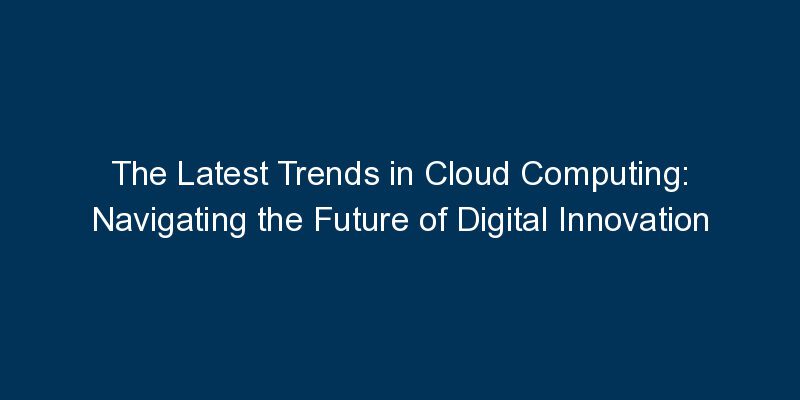Introduction
Cloud computing has evolved into a cornerstone of modern digital infrastructure, enabling businesses to scale, innovate, and stay agile. In this blog, we delve into the latest trends in cloud computing, unveiling the transformative shifts that are shaping the future of the digital landscape.
Cloud Computing: A Paradigm Shift
Defining Cloud Computing
Cloud computing involves the delivery of computing services—such as storage, processing power, and applications—over the internet. It replaces traditional on-premises infrastructure with scalable and flexible solutions, offering a pay-as-you-go model.
The Rise of Multi-Cloud Environments
Businesses are increasingly adopting multi-cloud strategies, leveraging services from multiple cloud providers. This approach enhances redundancy, minimizes vendor lock-in, and allows organizations to choose the best services for specific needs.
Current Trends Shaping Cloud Computing
Edge Computing for Real-Time Processing
Edge computing brings processing capabilities closer to the data source, reducing latency and enabling real-time data analysis. This trend is crucial for applications requiring instant responsiveness, such as Internet of Things (IoT) devices.
Serverless Computing for Efficiency
Serverless computing allows developers to focus on writing code without managing the underlying infrastructure. This trend improves efficiency by automatically scaling resources based on demand, reducing operational overhead.
Artificial Intelligence (AI) and Machine Learning (ML) Integration
Cloud providers are integrating AI and ML services, making advanced analytics and machine learning capabilities accessible to businesses. This trend empowers organizations to derive valuable insights from large datasets with ease.
Innovations Driving Cloud Evolution
Containers and Kubernetes Orchestration
Containers provide a lightweight, portable, and consistent runtime environment for applications. Kubernetes, an open-source container orchestration platform, simplifies the deployment and management of containerized applications at scale.
Hybrid Cloud Solutions for Flexibility
Hybrid cloud solutions combine on-premises infrastructure with cloud services, providing businesses with flexibility and control. This trend allows for seamless workload migration and optimization of resources.
Blockchain Technology in Cloud Services
The integration of blockchain technology enhances the security and transparency of cloud services. It ensures data integrity, facilitates secure transactions, and builds trust in cloud-based operations.
Challenges and Considerations
Data Security and Privacy Concerns
As businesses increasingly rely on cloud services, ensuring the security and privacy of data becomes paramount. Implementing robust security measures and compliance protocols is crucial to address these concerns.
Cost Management in Cloud Spending
The pay-as-you-go model of cloud computing can lead to unpredictable costs. Efficient cost management strategies, such as resource optimization and usage monitoring, are essential to control cloud spending.
Future Trajectories in Cloud Computing
5G Integration for Enhanced Connectivity
The rollout of 5G networks will revolutionize cloud computing by providing faster and more reliable connectivity. This trend opens the door to new possibilities in real-time applications, augmented reality, and enhanced user experiences.
Quantum Computing’s Potential Impact
While still in its infancy, quantum computing holds immense potential for cloud services. Quantum computing could tackle complex problems, optimize algorithms, and revolutionize data processing, ushering in a new era of computing power.
Conclusion
The evolution of cloud computing is a dynamic journey that continues to redefine the digital landscape. As businesses embrace the latest trends, they position themselves for increased agility, innovation, and efficiency in a rapidly changing world.
Navigating the future of cloud computing requires a strategic approach, where organizations stay informed about emerging technologies, address challenges proactively, and leverage the power of the cloud to drive digital transformation. The trends outlined here not only showcase the current state of cloud computing but also offer a glimpse into the exciting possibilities that lie ahead.



















Comments